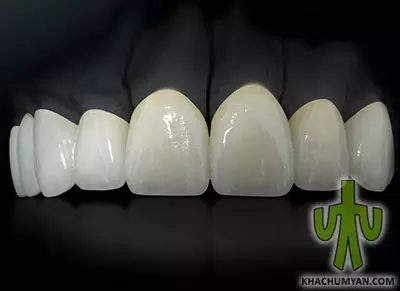 The absence of even one tooth leads to the reconstruction of the oral cavity, which increases the risk of oral diseases. There are several ways to handle this. When one or more teeth are missing, a bridge prosthesis is used. As the name suggests it includes two base teeth, and between them, a prosthesis for the missing tooth. During chewing, all the chewing pressure falls on the base teeth.
The absence of even one tooth leads to the reconstruction of the oral cavity, which increases the risk of oral diseases. There are several ways to handle this. When one or more teeth are missing, a bridge prosthesis is used. As the name suggests it includes two base teeth, and between them, a prosthesis for the missing tooth. During chewing, all the chewing pressure falls on the base teeth.
Types of bridge prostheses
- Metal-plastic and metal-ceramic
- Adhesive bridge prostheses. Modern dental substances are used for fixing the bridge
- Plastic bridge prostheses
- Bases: stamped metal crowns and the body-combined
- Bridge crowns with locking connections
- Cast metal bridge prostheses
Each type has its advantages and disadvantages and the choice of construction is made by the dentist who takes into consideration the clinical state of the oral cavity.
The choice of bridge prosthesis depends on different factors beginning from the specificity of the bite up to the condition of the teeth. Sometimes the financial side of the construction plays a decisive role, as the recommended prosthesis can be much more expensive than the patient's financial means. Although modern bridge prostheses are expensive, they are durable and have a high aesthetic value.
Also, there are bridge prostheses that are fixed on implants. This option is desirable when a large number of teeth are missing.
If the bridge prosthesis is properly prepared and installed and is thoroughly maintained by the patient it will withstand for decades.



